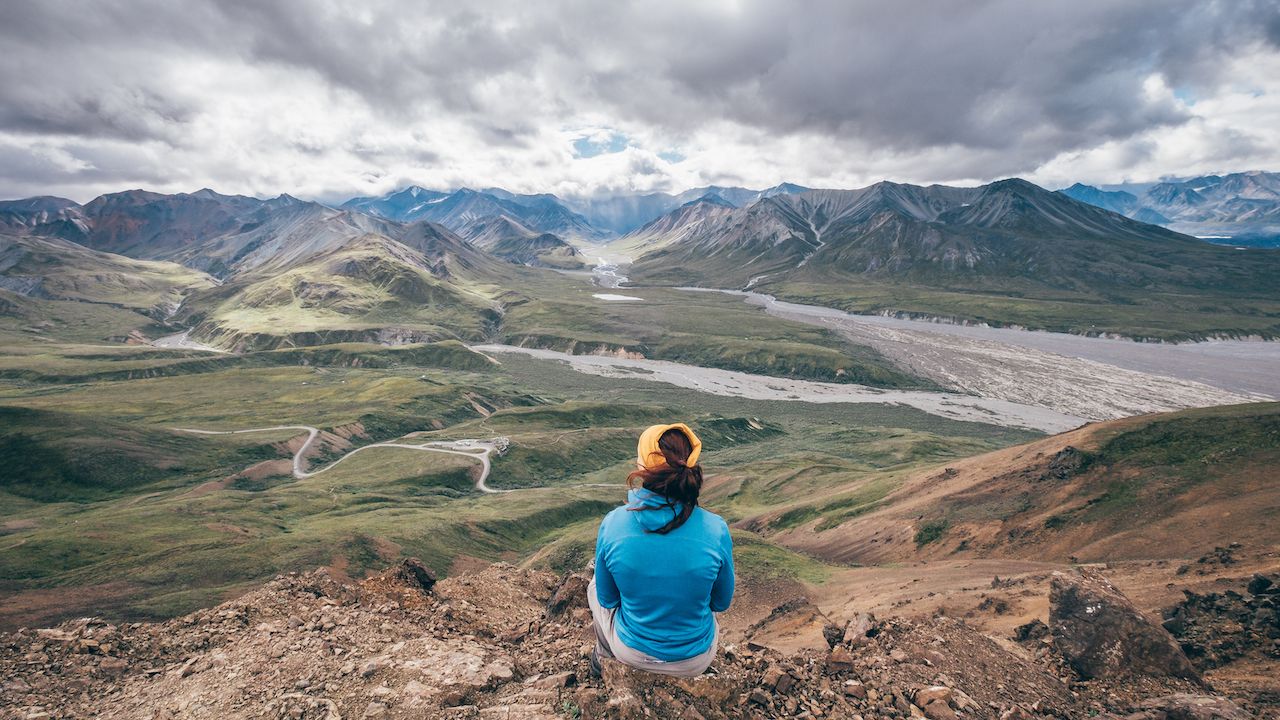The vast majority of visitors will see Denali from a bus window. And therein lies the opportunity to see and roam a six-million-acre wilderness both on and off the trail. Ultimately, Denali does not behave the way so many of us assume a national park should behave. True to its full name, it seems more a national preserve, open to the visitor but certainly not catering. Below is a list of everything you can experience in summer, spring, and fall so long as there isn’t major snow. Even if there is some snow, all the more peaceful.

Photo: Benny Marty/Shutterstock
Hiking — Get out on foot and hike the subalpine tundra and taiga. Count the kettle ponds — little remnants of glaciers — along your way. You’re welcome to wander anywhere that’s not roped off. This could be as quick as a two-hour stop off the trails near the visitor center or as long as a week spent in the backcountry.

Photo: Pecold/Shutterstock
Biking — Bike the 92-mile road that’s only open to buses. Camp in the backcountry, no one else in sight for miles. Your bike should also not be in sight; keep it at least 25 yards off the road and hidden from view when not riding. Go at your own pace, and keep an eye out for Dall sheep, caribou, moose, bears, eagles, squirrels, and wolves. You’ll need a backcountry permit, bear-resistant container, and some serious endurance: You’ll gain about 11,000 feet over these 92 miles. Pro tip: The shuttle buses have bike racks.

Photo: Travel Mixtape/Shutterstock
Fishing — The streams of Alaska are home to arctic grayling and rainbow trout, with the opportunity for you to wade in the water and create a scene similar to what you see adorning the covers of sportsman magazines — trophy fish in hand, a wide smile on your face, the peaks of Denali in the background. Outfits such as Fish Denali lead guided day fishing excursions, or you can head to Wonder Lake to try your hand at the lake trout.

Photo: Johnathan Esper/Shutterstock
Climbing — Many climbing and mountaineering routes are established throughout the park, with Mt. Foraker among the most popular for experienced climbers. The National Park Service maintains a blog with conditions and route updates, climbers’ stories, and tips for specific routes within the park. You can also hire a certified ranger from the park itself to guide your expedition, highly recommended for first-time visitors. If your group is ready for the big one, apply for a permit to climb Denali peak itself and must do so at least 60 days in advance.

Photo: attilio pregnolato/Shutterstock
Meditate — Pick the bushes of Blueberry Hill, sit at Reflection Pond, and snap photos of Denali over the water. Denali is best, and most unique, in its stillness. Found at the end of the park, Denali Backcountry Lodge and Kantishna Roadhouse can shuttle you to these stops if needed.

Photo: Paul Schenk Photography/Shutterstock
Admire a glacier — Walk parallel to the Muldrow Glacier, a 30-mile river of ice that’s receding before human eyes. The glacier is accessible with a backcountry permit via backcountry unit 18 — which, in turn, is accessible via units 13 and 23. There are some 800 other glaciers in the park, too, carving away at the landscape still today. Step onto the permafrost; it’s like walking on spongy basketballs.

Photo: Andrew F. Kazmierski/Shutterstock
Pan for gold — Older kids may also appreciate diving into the park’s mining history, particularly in the Kantishna area, going on moderate to strenuous ranger-guided Discovery Hikes and panning for gold or renting bikes from Denali’s backcountry lodges.

Photo: Dan Kosmayer/Shutterstock
Spot the wildlife — Each kid has their own set of interests, but there’s one most can agree on: wildlife. The “Big 5” is what everyone wants to spot in Denali: bears, caribou, wolves, moose, and Dall sheep. Dall sheep may be the easiest to spot; look for splashes of white up on the hillsides. The others may require a zoom lens or a pair of binoculars to decipher the movement along the riverbed or in the bushes, or they may be in the middle of the road, waiting for you to move around them No day in Denali is ever the same, and the more time you spend in the park, the greater your chances of a memorable, but safe, encounter. Also keep an eye out for fox, lynx, beavers, 160+ species of birds, and one stubborn, cold-weather frog.
